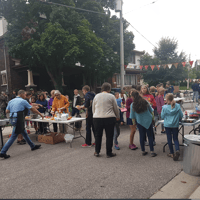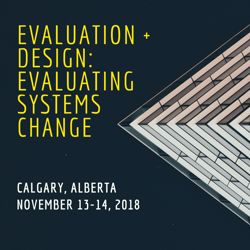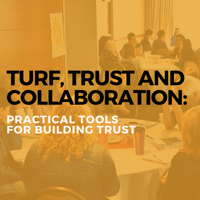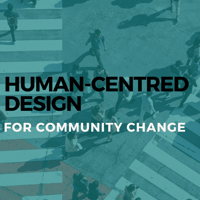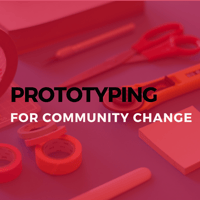Tamarack Institute | October Edition, 2018
In this Issue:
- A Mutual Pathway for Community Change: Sharing Global Perspectives
- The State of Cities Reducing Poverty
- Community Wisdom and Social Labs lead to Change in Winnipeg
- Building Community Through Citizen Advocacy
- The Thick and Thin of Community Engagement
- The Latest from the Field
- Upcoming Events You Won't Want to Miss
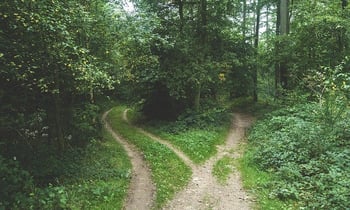 A Mutual Pathway for Community Change: Sharing Global Perspectives
A Mutual Pathway for Community Change: Sharing Global Perspectives
BY: LIZ WEAVER
It was in 2004 at the first Tamarack Community Change Institute (CCI) that I first met colleagues from New Zealand. They had travelled the globe to spend a week with Canadian changemakers and to share their perspectives, wisdom and questions. For many of us attending the CCI, this seemed quite exotic, but little did we know that a bond had already been formed and the individuals from New Zealand were keen to learn about Tamarack, our way of working and community change.
In the next few years, Inspiring Communities was formed in New Zealand building on the similar principles of developing a pan-New Zealand organization but focusing their work on the local context of deep community engagement and community building.
This year, Tamarack Institute is celebrating 15 years of supporting community changemakers and our colleagues at Inspiring Communities is celebrating 10 years. Over the ensuing years, the two organizations have kept in touch through the exchange of ideas, people, and projects. While we have forged different paths, our shared journey is similar and crosses often.
To mark these mutual anniversaries, we decided to collaborate on a paper and webinar in which we will explore the following four themes:
- The frameworks each organization deploys to drive forward change
- The importance the authentic engagement of citizens has played in each organization
- The need for adaptive and flexible leadership in community change
- The emergence of community-based innovation
The paper concludes with a shared vision for the future. While New Zealand and Canada may be many kilometres away from each other, the kinship and affinity we feel draws us close together and creates a mutual pathway for community change.
Learn More:
- Read the paper: Reflections on Community Change: Two Countries, Two Perspectives, One Vision for Moving Forward
- Join us on the webinar, Global Perspectives on Community Change where Liz Weaver, Tamarack Institute and Megan Courtney, Inspiring Communities will explore how community change efforts shift in different contexts.
- Learn more about Inspiring Communities
- Learn more about Tamarack Institute
Share this article:
 The State of Cities Reducing Poverty
The State of Cities Reducing Poverty
BY: ADAM VASEY
How has the Vibrant Communities – Cities Reducing Poverty (VC – CRP) network contributed to poverty reduction in Canada? In seeking to answer this central question, the State of Cities Reducing Poverty paper highlights the network’s numerous and varied impacts.
As the paper documents, the VC – CRP multi-sector model has helped facilitate community leadership on poverty, including among mayors and municipal councils, the business community, and people with lived and living experience of poverty. The network has also led and contributed to significant policy and systems changes in domains such as living wage, transportation, housing, and financial empowerment.
Additionally, the paper canvasses the key twenty-first-century movements – e.g., social innovation, national advocacy efforts, and the rise of poverty reduction strategies – that have shaped VC – CRP and built momentum for poverty reduction in Canada. Finally, it explores the challenges and opportunities that lie ahead. A key challenge is how to increase the network’s capacity to measurably reduce poverty across Canada. This is also an opportunity, especially in light of the recently released Canadian Poverty Reduction Strategy, which includes an Official Poverty Line and dashboard of indicators.
Since the State of Cities Reducing Poverty paper will be an annual publication, I’d love to hear your thoughts on what could be improved for next year. Feel free to send me an email. I also want to send a big shout out to all of the individuals and groups that shared their input on a draft version of the paper!
Call to Action for Cities Reducing Poverty Members
- Share and discuss the paper with your leadership roundtable
- Share the paper with your mayors, councillors and other elected officials
Learn more:
- Read the State of Cities Reducing Poverty Paper
- Learn more about the Cities Reducing Poverty network
- Get in touch with Adam to provide comments and feedback at adam@tamarackcommunity.ca
Share this article:
 Community Wisdom and Social Labs lead to Change in Winnipeg
Community Wisdom and Social Labs lead to Change in Winnipeg
BY: GALEN MACLUSKY
How does a community lead change on its own terms? The Winnipeg Boldness Project, a research and development initiative in Winnipeg’s North End, is working to do just that. Guided by community wisdom and inspired by Social Lab approaches, their story is an example of what is possible for communities that are inspired to lead change.
The Winnipeg Boldness Project (“the Project”) is a research and development initiative working alongside the North End community to identify effective mechanisms that will improve outcomes for young children in the Point Douglas area. The Project is working towards a Bold Goal:
Children and families in Point Douglas will experience dramatically improved wellbeing in all aspects of self: physical, emotional, mental, and spiritual.
The project has the following objectives:
- Design a six-year Early Childhood Development (ECD) intervention strategy for future implementation that will help young children in Point Douglas develop the tools they need to succeed in life.
- Create a strength-based narrative that highlights the positive and spirited aspects of Winnipeg’s North End through community perspectives.
- Build a child-centred model focusing on best practices for raising children through the deep community wisdom that exists within the North End.
We had the opportunity to speak with the Winnipeg Boldness Project to learn more about their work so far, the work remaining, and what they’ve learned along the way.
Learn More:
- Read the Case Study - Community Wisdom & Social Labs Lead to Change in Point Douglas
- Check out the Winnipeg Boldness Project’s Website
- Read An Overview of Community Innovation Trends: Design-Based Methods
- Register for Human-Centred Design for Community Change in Winnipeg where the Winnipeg Boldness Project will be featured (October 23, 2018)
Share this article:
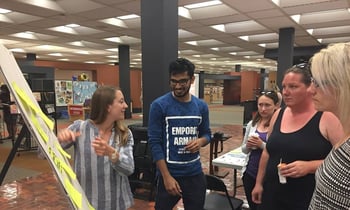 Building Community Through Citizen Advocacy
Building Community Through Citizen Advocacy
BY: HEATHER KEAM
I have been watching an old show called Little House on the Prairie with my three sons and I am sure most of you have heard about it or even watched the show. When the town of Walnut Grove has an issue or concern, the whole town fills the old school house to have a town meeting. When there is a celebration, the whole town takes part. This is truly inspiring. There was one episode where they were voting for their first mayor and the kids all drove around and picked up anyone who could not get out to vote.
Over the past three decades there has been a fundamental shift in informal social ties, tolerance and trust, and political and civic engagement in our communities. Evidence shows that our actual experiences of being involved in a community have been steadily declining since the 1960’s.
A recent 3-year study conducted by the Community Foundations of Canada focused on the issue of belonging and its link to community. It concluded that people’s experience of belonging is directly correlated to their subsequent willingness to contribute “to the common good” or to be engaged in the life of their community through activities such as voting and volunteering.
There are four neighbourhoods in Windsor, Ontario who are trying to fill their local “school house” with citizen advocates to address issues in their neighbourhoods. The four initiatives have come together to work on building the capacity of residents and to mobilize communities to make a collaborative change. The collaborators are Glengarry to Marentette Neighbourhood Renewal (IGNR); Downtown Windsor Community Collaborative; Ford City Neighbourhood Renewal; and, Our West End.
When citizen groups start to think about advocating there are many questions that they may have:
- What do advocates do?
- How much time is involved?
- How will we know we are successful?
- Are special training or qualifications needed?
The four collaborators in Windsor have come together leading up to a municipal election to host workshops that focus on various elements of politics to help address some of these questions. The workshops cover themes such as why your vote matters, how to get involved, local issues that matter to you, and candidate debates. To read more about the work that the four collaborators are doing in Windsor, read the Case Study, Building Citizen Advocacy Skills for Strong Neighbourhoods.
Across Canada, there has been a decrease in voter-turnout at every level of government. This means that government policy and decision-making represent only a small percentage of citizens. The purpose of the Windsor Case Study is to highlight the advocacy work being done in Windsor and to help other neighbourhood groups and organizations focus on fostering citizen advocacy. It is important for residents to build personal capacities to be able to advocate on their own behalf, and on the behalf of their community.
Learn more
- Read the Case Study - Building Citizen Advocacy Skills for Strong Neighbourhoods
- Learn more about Community Foundations of Canada study - Exploring Connection with Community
- Learn more about deepening your sense of community and connection at Cities Deepening Community
Share this article:
 The Thick and Thin of Community Engagement
The Thick and Thin of Community Engagement
BY: SYLVIA CHEUY
I recently had the opportunity to attend a workshop co-hosted by Public Agenda, non-profit organization based in New York City in partnership with the City of Toronto. Public Agenda, “helps cities, states and countries integrate the principles, practices and tools of sound public engagement.”
Like many of my fellow participants, I was keen to have an opportunity to learn from Public Agenda’s experience and eager to find new tools and approaches to effectively invite and capture the input and wisdom of citizens in shaping municipal projects and decisions. One of the take-aways of the workshop was a comprehensive list of tools and engagement platforms available for soliciting citizen input.
The breadth and scope of possible engagement resources outlined by Public Agenda underscored the importance of clarifying the intent, scope, timeline and available resourcing to support a public engagement effort. Public Agenda distinguishes between three distinct types of engagement:
- Conventional Engagement – This type of engagement is the most traditional form of public engagement. Members of the public are separated from public officials and each individual’s comments are often time limited.
- Thick Engagement – This form of engagement is more intensive and interactive. Opportunity for dialogue is offered in small groups, interaction and exploring of diverse perspectives is encouraged, and the options generated by participants are shared with all. Thick engagement approaches are good for building understanding between different groups; generation of new solutions and nurturing shared ownership, new connections and collaboration.
- Thin Engagement – These engagement approaches are faster, easier and more convenient. They are the best way to get initial reactions of a significant number of people in a short time. Thin approaches to engagement emphasize individual opinions, from which organizers can identify patterns but are not as effective at building understanding, consensus and contribution as “thick” approaches to engagement do.
Discerning the right types of engagement to use when, in order to achieve the engagement results you need is the foundation of a well-designed engagement strategy.
The conversations and stories shared by fellow workshop participants, were another valuable aspect of this workshop for me. I was struck by the variety of projects and issues that people were developing engagement strategies for. Common characteristics shared by many of these projects and issues included:
- The need to consider – and find ways to balance – the diverse needs and aspirations of a variety of stakeholders.
- Obtaining the input and feedback of vulnerable populations (e.g. newcomers, those living in poverty etc.) is particularly challenging and can also be extremely valuable for designing effective programs and services.
- The work of community engagement would perhaps be more aptly called system engagement. Many engagement strategies are designed to reach out to multiple stakeholder groups – not the least of which include municipal staff from multiple departments, elected officials as well as leaders from multiple sectors.
- The recognition that the focus of many public engagement efforts is not limited to only gathering input. Information-sharing, education and trust-building are often among the stated outcomes of community engagement efforts.
- While the value of creating a culture of community engagement – where regularly seeking input, feedback and ideas from citizens and other stakeholders is “baked into” the day-to-day work of municipalities – is compelling given the complexity of issues they face, the focus of community engagement is still predominantly programmatic in focus.
Having a robust toolbox of community engagement tools and approaches is a real asset, but discerning which tools to use, for whom, and when is an equally important capability to cultivate in order to realize the full promise of community engagement as a foundational practice to effectively implement community change.
Learn more
- Learn more about Public Agenda
- Check out Tamarack's Community Engagement resources
Share this article:
A COMMON PURPOSE
By: Geraldine Cahill
Read the Post
MY FAVOURITE COMMUNITY CHANGE RESOURCES
By: Liz Weaver
Read the Post
WORKING TOGETHER TO MAKE THINGS BETTER
By: Myrisa Schubert
Read the Post
REFLECTIONS FROM A LOCAL POVERTY ALLIANCE
By: Hillary Geneau
Read the Post
THE FUTURE OF CITY BUILDING: KITCHENER'S #LOVEMYHOOD
By: Justin Williams
Read the Post
THINKING BEYOND THE ADVISORY GROUP
By: Galen MacLusky
Read the Post
Evaluation + Design: Evaluating Systems Change
November 13-14, 2018
Calgary, AB
This new two-day workshop led by Mark Cabaj and Galen MacLusky will help you build a plan for systems change evaluation that suits your unique context. Explore principles and practices that can guide your work, build your palette of evaluation tools, and learn how a design-based approach can help you bring these elements together to create systems change evaluations that deliver impact.
One Day Workshops
Turf, Trust & Collaboration: Practical Tools for Building Trust
Next week!
Moncton, NB - October 10, 2018
Halifax, NS - October 11, 2018
This interactive workshop focuses on the core leadership competency of trust building, and will equip you with ideas, tools and approaches to effectively engage diverse community partners and intentionally build trusting relationships and collaborative impact.
Human-Centred Design for Community Change
Winnipeg, MB - October 23, 2018 | Guelph, ON - October 26, 2018
Human-Centred Design and Design Thinking are rapidly rising as tools for innovation across the public, private, and voluntary sector. How can community changemakers use these exciting approaches to strengthen and deepen their work?
In this full-day workshop, engage with the latest theory behind these methods, practical ways to put theory into practice, and get hands-on experience with some of the most helpful tools that these approaches offer.
Prototyping for Community Change
Winnipeg, MB - November 20, 2018 | Guelph, ON - November 30, 2018
How can you build buy-in for a vision for community change, help a stalled effort get un-stuck, and test ideas before making costly investments in new programs and services? The intentional practice of prototyping is a core part of effective community change.
In this full-day workshop, Galen MacLusky, Tamarack’s Director of Community Innovation will share how communities and organizations are using the practice of prototyping to advance their work, practical examples of forms of prototyping that suit common challenges, and help participants build plans for how they can start prototyping their ideas.
The Winnipeg Boldness Project: Community Wisdom & Systems Change
Date: October 11, 2018 | 1:00 - 2:00pm ET
Speakers: Diane Roussin, Winnipeg Boldness Project, and Galen MacLusky




